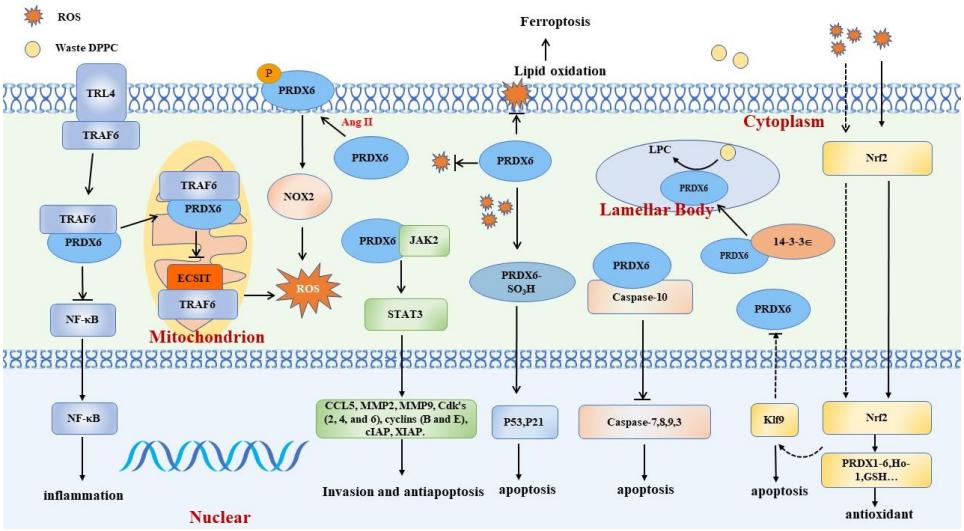NAA Services for Anti-Peroxiredoxin VI
Elevated levels of anti-peroxiredoxin VI (PRDX6) have been described in several cancers including gastric cancer (GC). Early detection and efficient monitoring of tumor dynamics are prerequisites for reducing disease burden and mortality, and for improving the management of patients with GC. As a long-term expert in disease early detection, Creative Biolabs owns lots of scientists who are proficient in the establishment of natural autoantibody (NAA) detection methods. Our professional scientists are pleased to provide the custom anti-PRDX6 services to promote your project.
Background of Peroxiredoxin VI
Peroxiredoxins (PRDXs) are a ubiquitously expressed family of small (22-27 kDa) non-seleno peroxidases that catalyze the peroxide reduction of H2O2, organic hydroperoxides, and peroxynitrite. PRDXs are composed of six enzymes. PRDX1-5 have two reactive cysteines and they use thioredoxin and/or glutathione as a substrate. By contrast, PRDX6 has important and unique characteristics. It has a single conserved Cys residue causing a different catalytic cycle, and it uses glutathione (GSH) instead of thioredoxin as the physiological reductant. PRDX6 has been reported to be implicated in the development and progression of cancers. For example, elevated expression levels of PRDX6 have been associated with a more invasive phenotype and metastatic potential of breast cancer, and with a worse prognosis of clinically localized prostate cancer following radical prostatectomy.
 Fig.1 The functions of PRDX6 in cell signaling.1
Fig.1 The functions of PRDX6 in cell signaling.1
The Role of Anti-peroxiredoxin VI in Gastric Cancer
GC is a multifactorial disease, and both genetic and environmental factors have a role in its etiology. The 5-year survival rate of early diagnosed GC patients is higher than 90%, while it is only 30-40% for advanced GC. Blood-based biomarker assays are of great importance for the detection of early-stage GC. Expression of PRDX6 is markedly higher in tumor tissue than in normal epithelium and dysplastic lesion at the protein level according to immunohistochemistry. The detection of autoantibody against PRDX6 may serve not only to diagnose NPC but also to develop new targeted therapies according to the current publications.
What We Can Do About NAA?
Equipped with our well-established platforms and experienced scientists, we can provide comprehensive NAA services, from NAA detection, NAA profiling, to NAA epitope mapping. A wide spectrum of NAA products is available for your choice.
Features of Our Services
- Seasoned technology without a large scale of repeats
- Fast turnaround time and competitive pricing
- Personalized service to meet your specific demand
Current status arouses researcher’s interest in cancer early diagnosis by single or panel of autoantibodies against multiple tumor-associated antigens. With years of experience in the field of disease diagnosis and NAA detection, Creative Biolabs is capable of providing a great variety of services against different markers including but not limited to PRDX6 for the diagnosis of GC. Moreover, we provide customized solutions to meet the requirements of every client. Please feel free to contact us for more information and a formal quote.
Reference
- Jia, Wenhui, Chunling Dong, and Bo Li. "Anti-Oxidant and Pro-Oxidant Effects of Peroxiredoxin 6: A Potential Target in Respiratory Diseases." Cells 12.1 (2023): 181.
Related Services:
- NAA Services for Anti-TERF1 Antibody
- NAA Services for Anti-HCC-22-5
- NAA Services for Anti-KM-HN-1
- NAA Services for Anti-p90
- NAA Services for Anti-NT5E Antibody
- NAA Services for Anti-MAGEA4
- NAA Services for Anti-COPS2 Antibody
- NAA Services for Anti-CTSF Antibody

